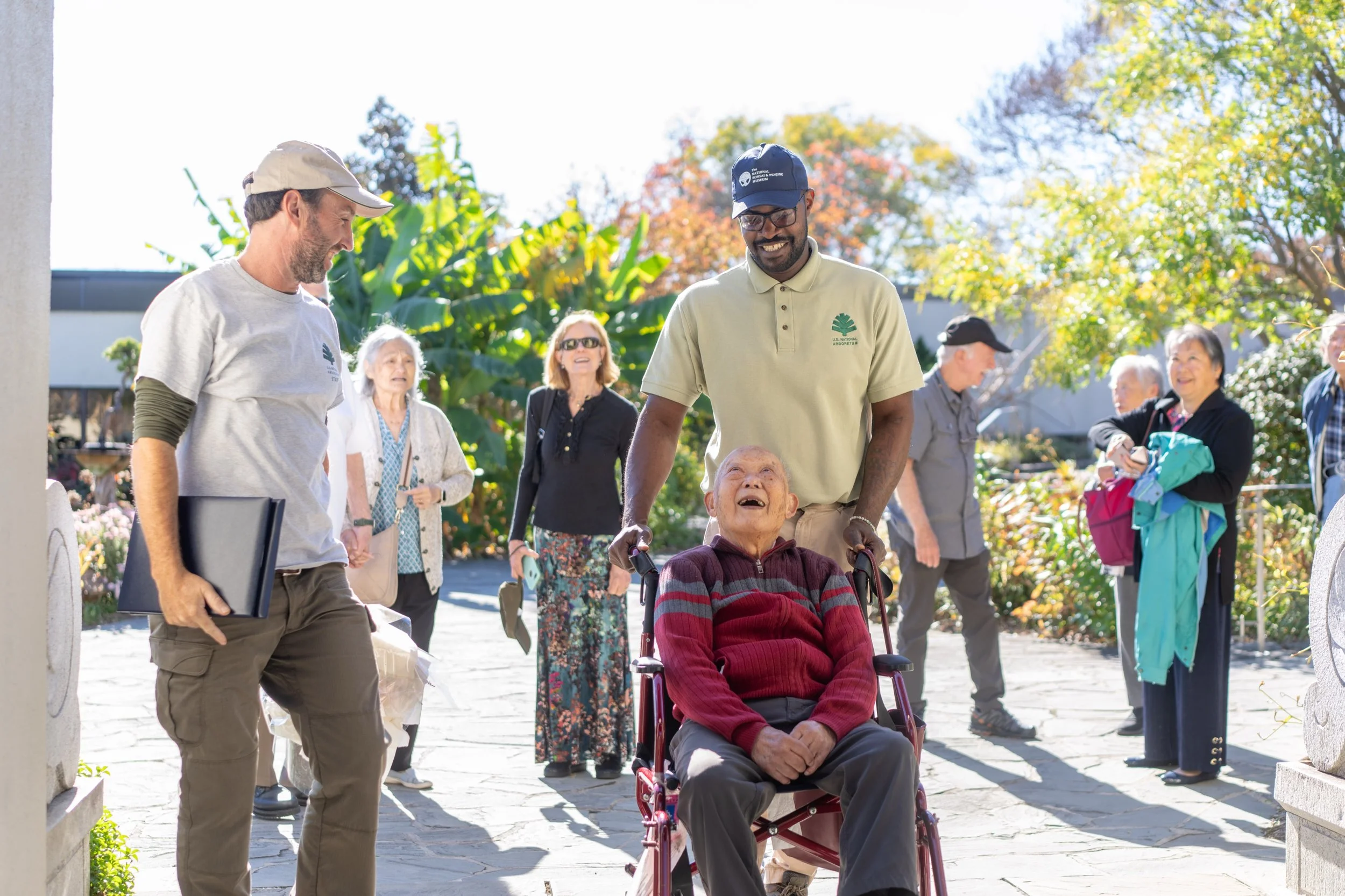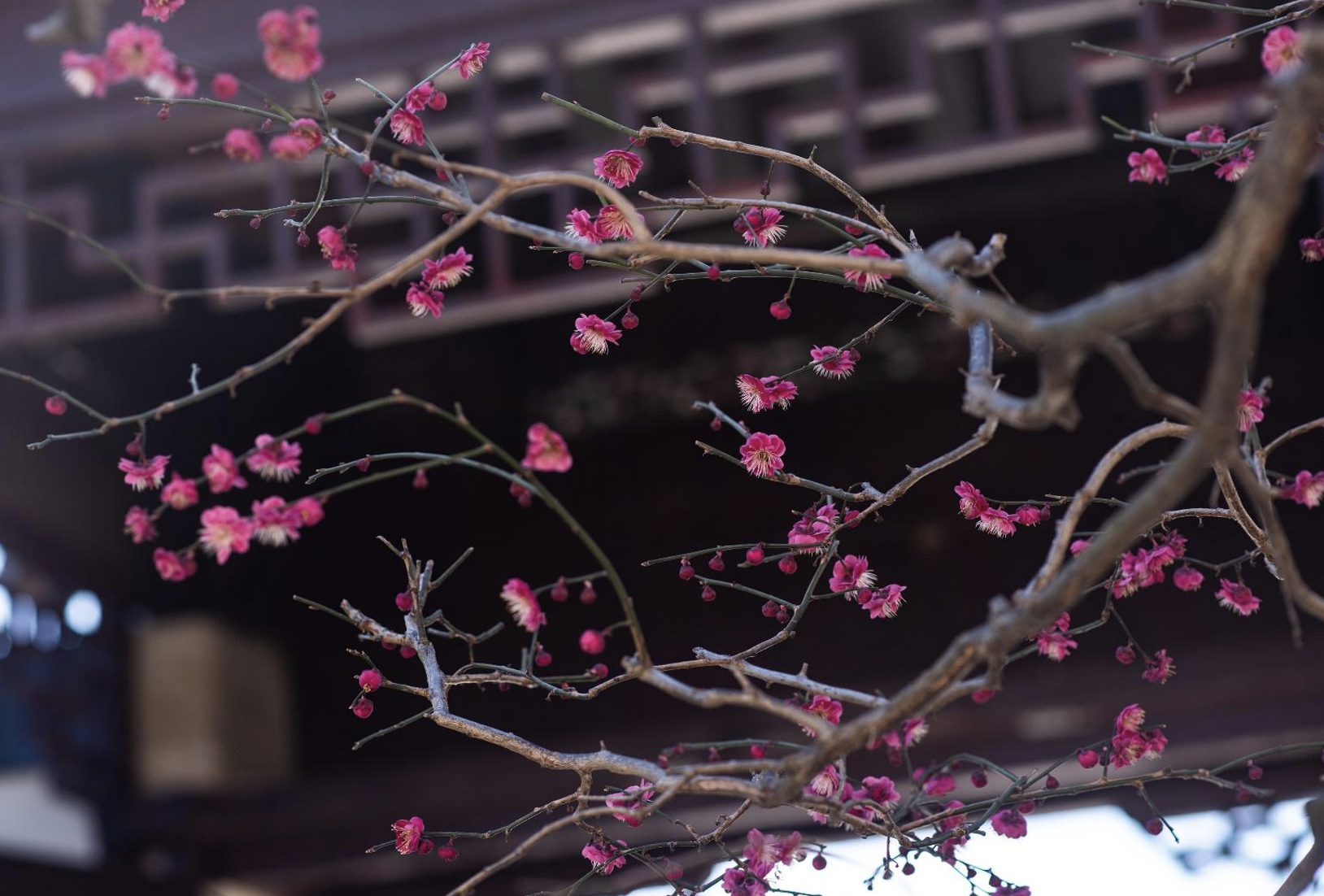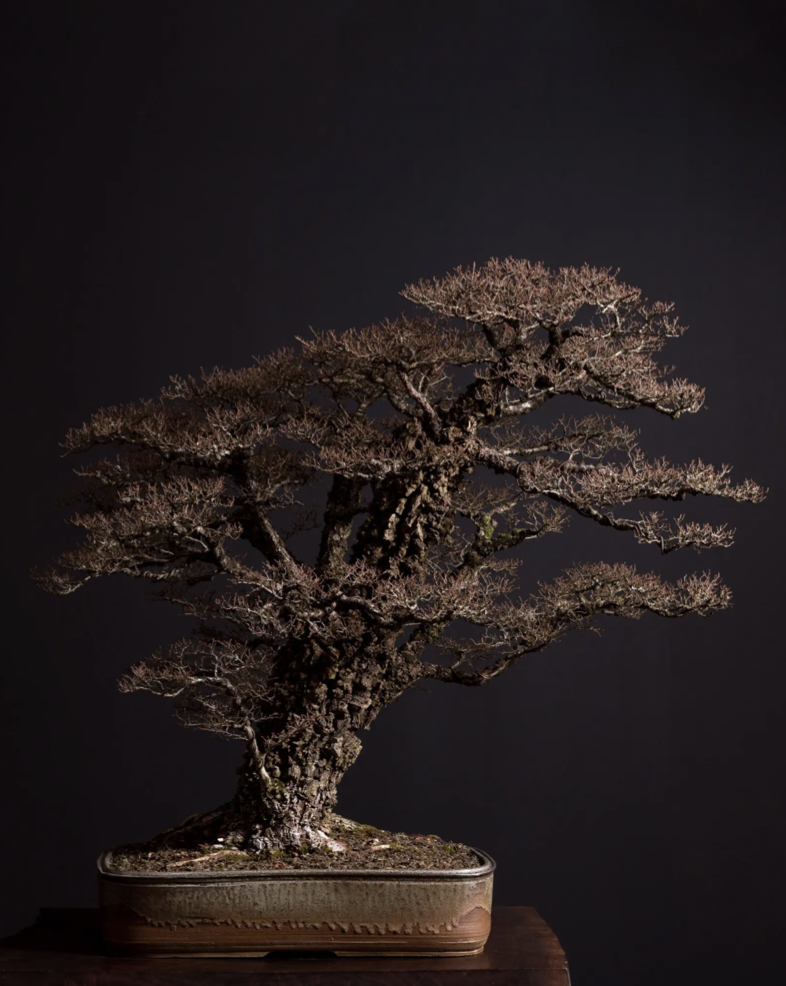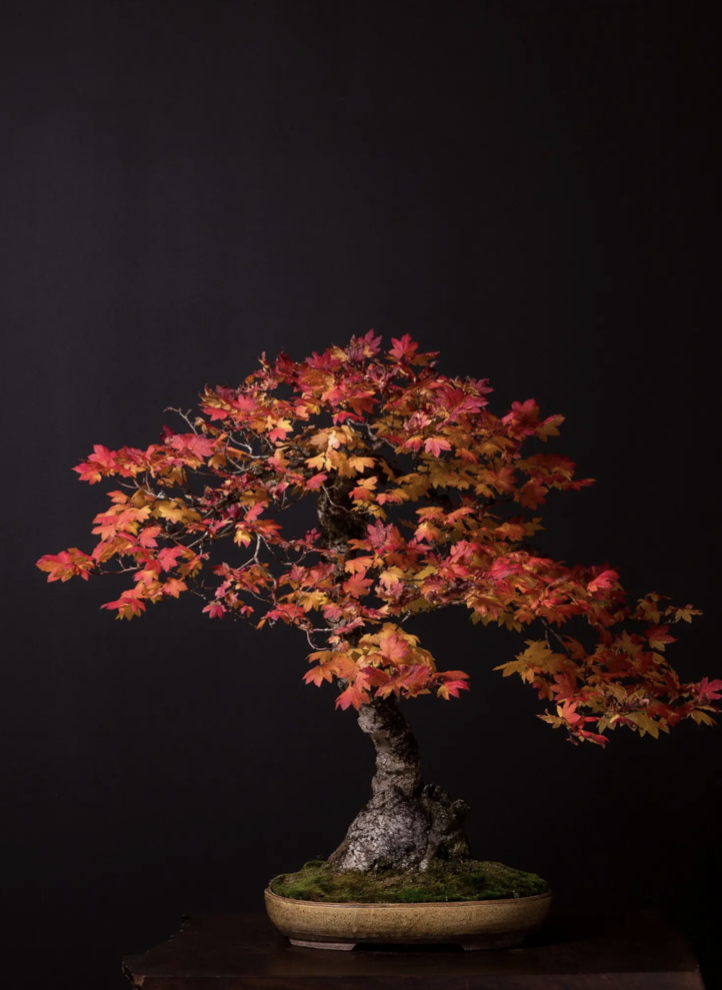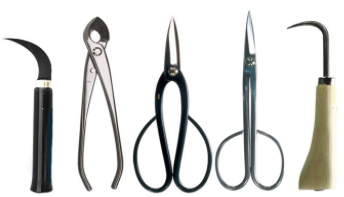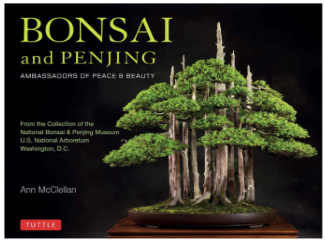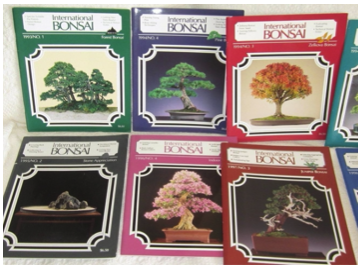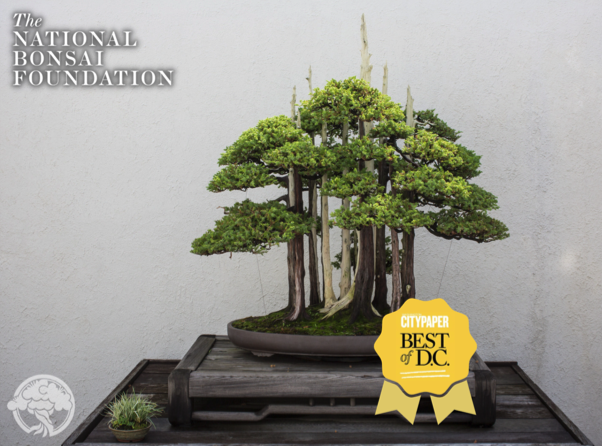Prunus mume 'Kobai' flowers blooming at the entrance to the Dr. Yee-Sun Wu Chinese Pavilion at the National Bonsai & Penjing Museum. Photo by Steven Voss
It is peak cherry blossom time in Washington, D.C., and the beginning of a new growth ring. The birds, the bees and the humans are all swarming at the National Arboretum. The flowering cherry tree is the pinnacle angiosperm– that’s a fancy word for “flowering plant.”
The United States National Arboretum is a Clonal Germplasm Repository for the United States Department of Agriculture’s Agricultural Research Service. Let’s just say it is a plant DNA library, but instead of books on shelves there are collections of plants in Arboretum gardens.
The U.S. National Arboretum has more than a thousand cherry trees in their prime for viewing. While their twigs are still naked of leaves, hard wood branches are covered in delicate blossoms. Bees wiggle between the petals and pull out clutches of gold pollen. Humans put their backs against the flowers, smile at cameras, and click. Eagles are soaring and songbirds sing above it all!
One exceptional specimen of cherry tree DNA is in the National Bonsai & Penjing Museum. Check it out by strolling past the masterpiece bonsai and penjing in the Museum’s central courtyard, behind the massive red doors of the Yee-Sun Wu Chinese Pavilion. Rising from the corner, with branches that partially eclipse the moon gate entrance, is a cherry tree named Prunus mume ‘Kobai’. Less than a month ago icicles were dripping from its hot pink petals.
This spring, the National Bonsai & Penjing Museum is displaying collections of flowering plant DNA in the form of bonsai and penjing. The Museum’s azalea bonsai special exhibit will be May 21st to June 5th. Some other spring flowering bonsai to admire are quince, maples, crabapples, firethorn, pomegranate and privet. The maple flowers will be small and subtle. They are often too high to see in the wild, so they are overlooked in the landscape. When viewing the blossoms in the Museum’s Japanese Pavilion, they are accessible, a perfectly sized ornament for miniature trees. There is nothing subtle about the flowers on azalea bonsai. Branch pads are pruned to such exaggerated forms that individual plants sometimes appear to be dancing for attention. Within the John Y. Naka North American Pavilion, when the breeze is right, perfume from privet bonsai flowers may be smelled before they are seen.
One reason bonsai trees appear to be so small is because the size of leaves can be reduced by human intervention. Humans may withhold water or fertilizer to decrease their size. Or large leaves may be plucked and grow back smaller. Roots are constrained by high fired glazed earthenware, but the size of flowers cannot be reduced. Their function is to make future plants. As reproductive elements of plants, where and when they form on bonsai is controlled by reproductive hormones.
In 1920, two United States Department of Agriculture essential employees named Garner and Allard discovered that many plants flower in response to changes in day length. So, some of the bonsai flowers being adored this spring first began to grow almost a year ago. Last summer and autumn when the days were getting short, spring flowers were microscopic. They were hidden within sheaths of dormant buds for their protection. Growth slows in the winter, but it rarely stops. As flower buds endure the chill they swell faster with every increasing degree.
Specimens prepared for the Museum’s spring flowering bonsai displays receive countless judicious pruning sessions between flower formation last year and peak spring bloom. Established silhouettes have been preserved with care not to revert century old bonsai back into a flower-less juvenile state. The common bonsai technique of pinching, or as an arborist would call “header cuts,” are used with reservation. The resulting branch ramification may not allow enough sunlight into canopies to disinfect the diseases flowering trees are prone to. The culture of masterpiece flowering bonsai by pruning is both selective and reductive. The strongest branches are often removed while leaving the little phototropic lateral ones. Those lateral branches, or “spurs,” as an orchardist may say, are where flowers are born.
With all the help they are receiving from birds, bees, and humans at the U.S. National Arboretum the flowers are sure to be pollinated this spring. Another growth ring will form, flowers will become crabapples and exhibitions will change. This year, the Museum’s fall fruit and foliage special exhibit will be held from October 29 through November 13th. It will highlight bonsai and penjing from the collections at peak autumn color and ripeness. The seasonal nature of bonsai ensures that there is always something to look forward to.

